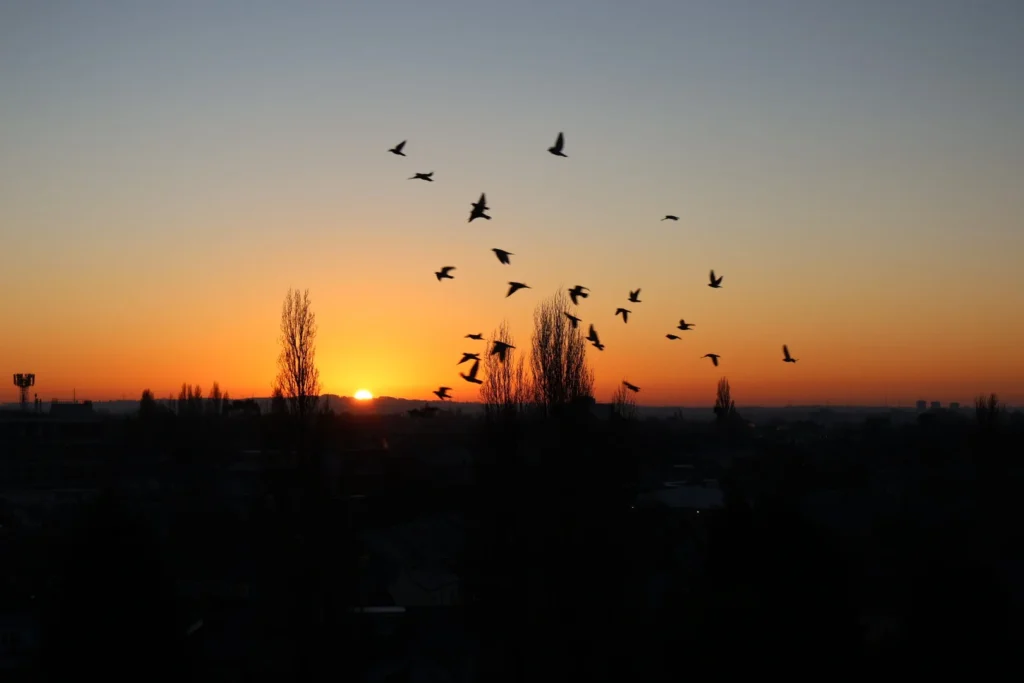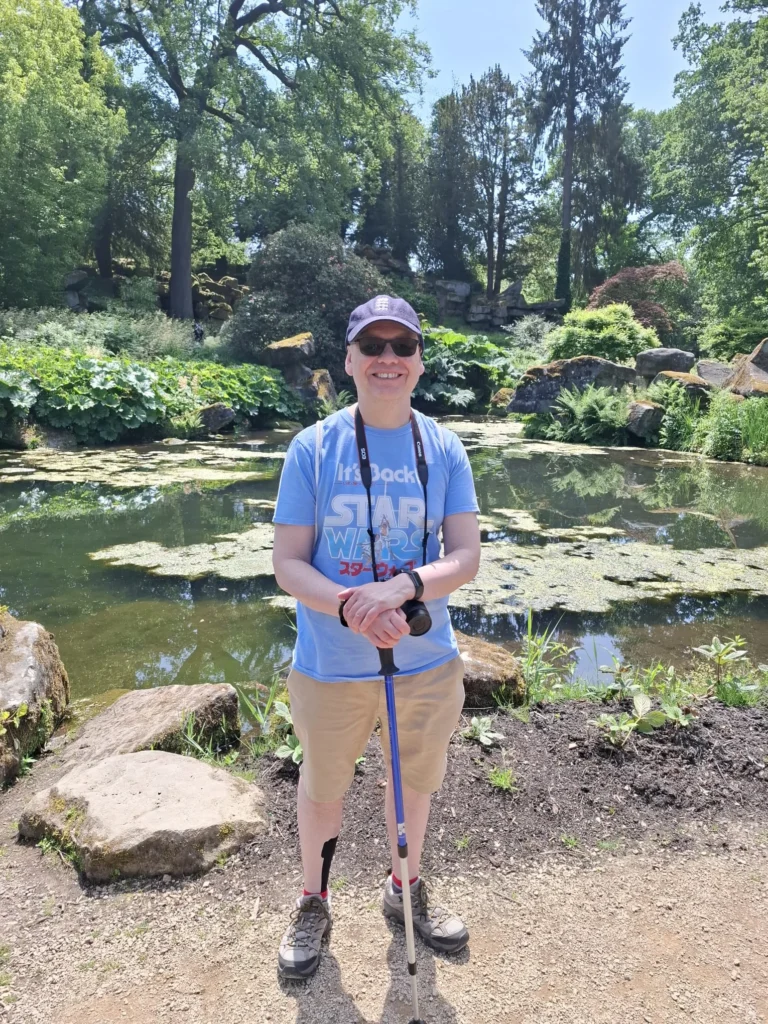
Estimated reading time: 5 minutesI first met Ian at an EDS UK men’s online movement class during the pandemic.
I ran a number of free events for people with Ehlers-Danlos syndrome and symptomatic hypermobility during that challenging time to help people keep moving.
I was happy to see so many men show up for the class and learn some foundational movements they could continue at home.
At the time, I had no idea what Ian’s background was and how much his personal life and quality of life were impacted by his EDS.
I am delighted and honoured to share his journey in his own words with you on this week’s blog.
In The Zebra Club, we celebrate the transformations, big and small, that take place. Starting with small steps.
Thank you, Ian, for your honest and open account of your journey.
What was your daily life like before discovering The Zebra Club?
Before I joined The Zebra Club, I was off on sick leave from work.
I had daily struggles with general movement. Struggling to sit, stand, lie down, and sleep was a few hours each night.
Walking the 10 metres from bedroom to bathroom (no stairs) was taking a number of minutes, holding onto the walls, almost in tears from pain. I felt at times that the whole of my left side was giving up on me.
I was told that walking around 10 meters at a time could become my new normal. The pain, fatigue from lack of sleep, and the stress of possibly not working were difficult.
What was your biggest challenge managing your hypermobility/EDS symptoms?
Fatigue, physical and mental, has been the longest and hardest to deal with.
Pain is always difficult, but finding the balance of pacing, not pushing too much very difficult. It’s something that I have worked on and am working on.
What made you decide to give The Zebra Club a try?
I had heard about Jeannie Di Bon via YouTube. However when, during the COVID lockdowns, Jeannie did a live class with the men’s group for the Ehlers-Danlos Support UK charity, is when I first heard about The Zebra Club.
It took me a couple of months before I joined. I felt joining was the last chance saloon, as I was getting worse, not better, from physio.

Sunrise by Ian
What approach did you take when you first started using the app?
When I first started The Zebra Club, I was full on doing a class and then crashed. I didn’t take much notice of the community. I’m doing it my way. WRONG!!.
So I took a little break for a week. Then I went through the community chat, watched the community meetings, and Jeannie’s podcasts. This was when I first heard “Slow and low” mentioned.
After some trials and errors, I realized my slow was lying on my mat, trying to relax and let go of tension.
The Zebra Club kinda gave me permission to relax. I learned that relaxing is important. No one had really said this to me before.
Slow and low, Less is More.
For me, this was building up by doing a class one rep at a time until I could do a whole class doing one rep. It took me around 3 months to complete the Unwinding the Pelvis class with the full reps that Jeannie did.
What parts of The Zebra Club made the biggest difference for you?
100 percent, it is the supportive community.
Before I joined Zebra Club, I never did any type of social media. But the Zebra Club community is special. It has guided me and held my hand, made me laugh as well.
I also love the resources and the guest presentations, and Jeannie’s presentations. For me, this educational information is as important as the wonderful classes.

Photo by Ian
How is Jeannie’s Integral Movement Method different from other exercise programs you’ve tried?
Before joining Zebra Club I’d seen around 20 different physiotherapists, really only one of those helped me.
Jeannie’s IMM method felt strange, because it wasn’t just about fixing that knee pain, doing 15 reps 3 times a day, bracing this so on.
It was about me being comfortable with myself while doing class. I’m in control. Jeannie’s cues teach you how to have mind mind-body connection.
What improvements have you seen in your body and daily life since starting with The Zebra Club?
So many changes.
- First, with every step I was in pain, but this has greatly reduced; I can walk around about 2.5km (1.5miles).
- I’ve carried on working part-time.
- We can plan a day out or half a day out.
- I’m no longer on long-term pain medication.
- But it’s also got me doing things like enjoying doing art, being out in Nature, reintroducing me back to photography after I thought those days had gone.
I’ve recently been able to visit Chatsworth House gardens, something I’ve wanted to do for a long time.
I’m still very much a work in progress. The Zebra Club has given me HOPE, which is important.
What would you tell someone with EDS/hypermobility who’s nervous about starting movement?
It’s understandable to be nervous. I was very nervous to try a different approach, as nothing else had helped me.
Asking questions in the community helped me, even though I was so embarrassed to ask any.
For anyone starting out on movement, my advice is listening to your body; doing one rep is fine. Doing little and often is fine. Sometimes we have to do less to build to do more.
Note: The photos shared in the blog were taken by Ian on his nature walks.

We asked Ian what is favorite video on my Hypermobility Channel YouTube is, and he replied that it was this video. Listening to how”Jeannie and Ana talk about how important breath is and slowing things down. Made me rethink and helped me to reengage at the start of my TZC journey.”
FAQ
What challenges was Ian facing before joining The Zebra Club?
Ian was in severe pain and could barely walk 10 meters without tears. He struggled to sit, stand, or sleep properly, and daily life with EDS felt overwhelming and isolating.
Why did Ian decide to try The Zebra Club for EDS?
After seeing Jeannie Di Bon lead a free men’s movement class during lockdown, Ian joined The Zebra Club as a last resort. Traditional physio hadn’t helped, and his symptoms were worsening.
What changed when Ian started using The Zebra Club app?
Initially, Ian overdid it and crashed. But after exploring the community and embracing the “slow and low” mindset, he began to build strength through relaxation and gentle pacing.
How did The Zebra Club help Ian go from 10 meters to 2.5km?
By starting with one rep at a time, prioritizing rest, and learning from Jeannie’s Integral Movement Method, Ian slowly increased his tolerance. Over time, he went from painful 10-meter walks to walking 2.5km with less pain and more confidence.
What other improvements has Ian seen in daily life?
He’s working part-time, off long-term pain meds, enjoying art and photography again, and going on trips. The Zebra Club has given him hope and helped him reconnect with life.
What advice does Ian have for people with EDS or hypermobility who are nervous about movement?
A: Start small. One rep is enough. Engage with the community, ask questions, and don’t be afraid to rest. Sometimes doing less helps you build up to doing more.


No Comments